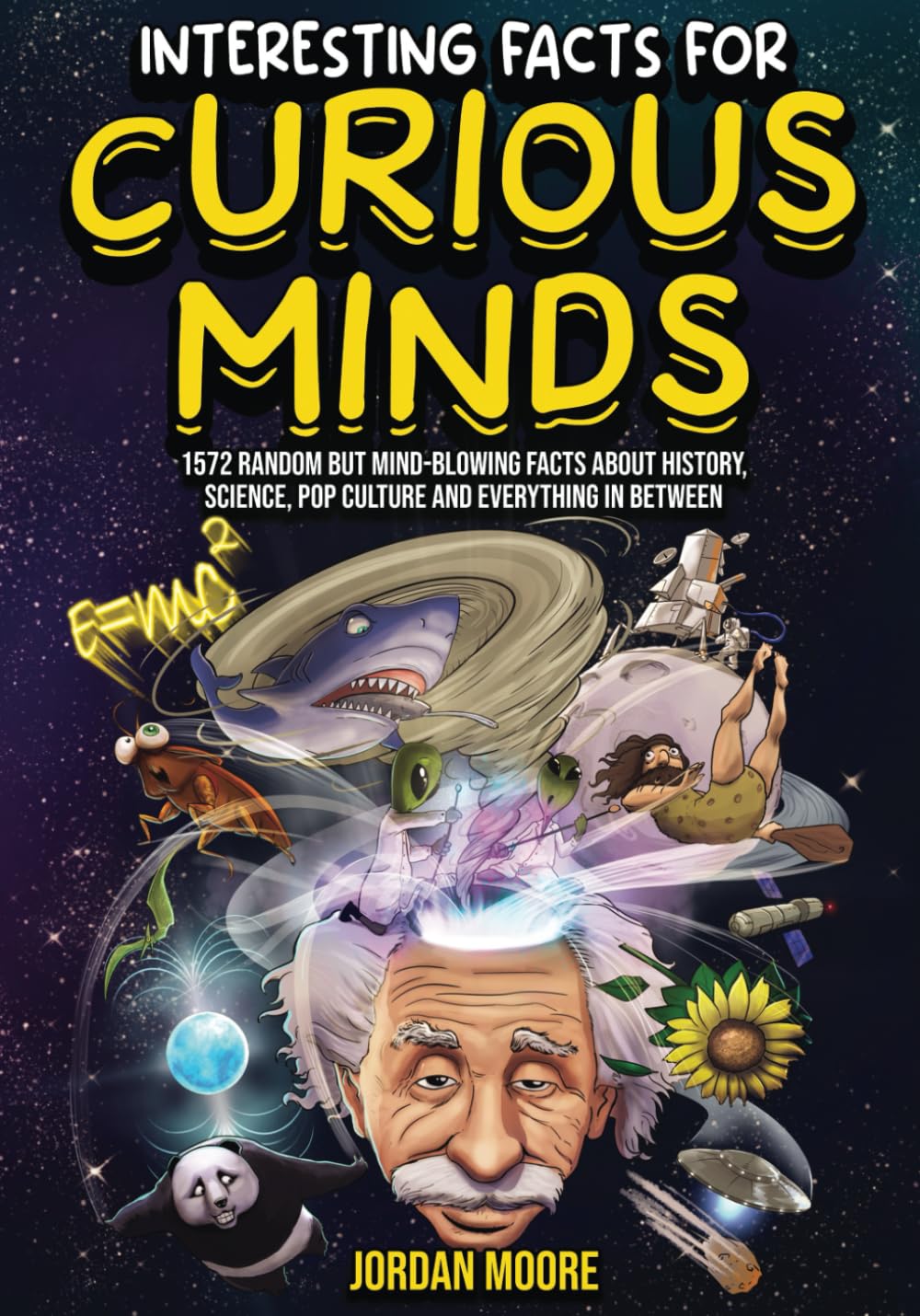
Interesting Facts For Curious Minds: 1572 Random But Mind-Blowing Facts About History, Science, Pop Culture And Everything In Between
Quiet On The Set
byQuiet on the set, the phrase often heard right before filming begins, encapsulates the magic and complexity of the movie-making world. The 1950s were an iconic decade for Hollywood, with The Ten Commandments and Ben-Hur being the highest-grossing films of that time. These cinematic masterpieces not only helped to establish the careers of film legends like Charlton Heston, but also set the stage for future epic productions that would captivate audiences for decades. The global film industry, from the U.S. to the U.K., continues to evolve, with Hollywood’s famous studios counterbalanced by locations like Pinewood Studios in the U.K., where countless British films and TV shows, including the famed James Bond franchise, were filmed.
In the world of cinema, history has not always been kind to the preservation of films. About 70% of silent films have been lost to time, primarily due to the highly flammable nature of the nitrate film stock that was used during that era. This tragic loss has left many early cinematic gems to fade into obscurity, leaving film historians with only fragments of what could have been. Despite the technological advances, like the rise of color television in the 1960s, film preservation has remained a critical issue. The introduction of color TV in the U.S. began slowly, with only 3% of American households having color TV sets in 1964. By 1972, however, advancements in technology and decreasing costs made color television accessible to over 50% of American homes, signaling a shift in how audiences consumed visual media.
Though the early days of cinema were dominated by the projection of black-and-white films, the silver screen was a vital component in the evolution of the film industry. It was on this reflective surface that early films were shown, and it became the foundation for the industry’s nickname, the “silver screen.” However, the landscape of film continued to shift as new genres emerged. For example, the 1980 film Cannibal Holocaust, one of the first found footage films, shocked audiences with its level of realism. So convincing were the performances that director Ruggero Deodato was briefly charged with murder, though the allegations were later dismissed. This film, like many others in its genre, pushed the boundaries of what was considered acceptable, igniting debates on the ethics of exploitation films, which often included gratuitous violence and nudity.
Fast forward to the 1980s, and the arrival of the Music Television (MTV) network in 1981 marked a seismic shift in how music and visual culture were consumed. Initially met with little fanfare, MTV quickly gained traction, with its first video, Video Killed the Radio Star by The Buggles, marking the start of a new era in entertainment. This explosion of music video culture had a lasting impact on the entertainment industry, blending the world of music with the visual medium of television in ways that were previously unimaginable. The advent of home video rental also had a major impact during this time. The Video Recording Act of 1984, which required films to be classified by the government before being rented or sold, was introduced partly in response to the rise of exploitation films. These films, often referred to as “video nasties,” challenged traditional norms and prompted the government to regulate the types of media available for public consumption.
Television and film continue to evolve, with technologies like the VCR in the 1980s allowing home viewers to watch movies at their convenience. The price of television sets in the 1950s, ranging from $129 to $1,295, reflects the cost of early entertainment technology. A color TV set was at the high end of the scale, well over $1,000, which made it a luxury item for many families. However, the cost of entertainment was not the only factor that changed over time. The influence of film icons such as Stan Lee and Samuel L. Jackson in Hollywood continues to be undeniable. Lee, known for his Marvel cameos, has become the highest-grossing actor of all time, with over $30 billion in earnings from his roles in the Marvel Universe. Meanwhile, Samuel L. Jackson follows closely behind, earning approximately $27 billion from his extensive career in film.
The impact of The Simpsons on American television cannot be overstated. As the longest-running animated series, longest-running sitcom, and longest-running scripted primetime television series in American history, The Simpsons has broken numerous records. This remarkable achievement highlights the power of television to captivate audiences over long periods of time, adapting to changing cultural and technological landscapes. Even Thomas Edison, one of the early pioneers of the film industry, had a lasting influence. His invention of the kinetoscope, a motion picture viewer, and his early film studios in New Jersey and New York laid the groundwork for the future of cinema. Despite facing challenges in the preservation of films, Edison’s contributions were foundational in making film a mass medium and setting the stage for the global entertainment industry we know today.
Ultimately, the world of entertainment continues to be shaped by innovations in film, television, and technology. Each new era builds upon the last, from the early days of silent film to the era of color television, to the digital age where streaming services have transformed how we access and enjoy media. What remains constant, however, is the influence that these mediums have on culture, society, and the way we experience storytelling. As technology advances, so too will the way we engage with film and television, ensuring that the magic of the movies and the power of storytelling will continue to evolve for generations to come.

